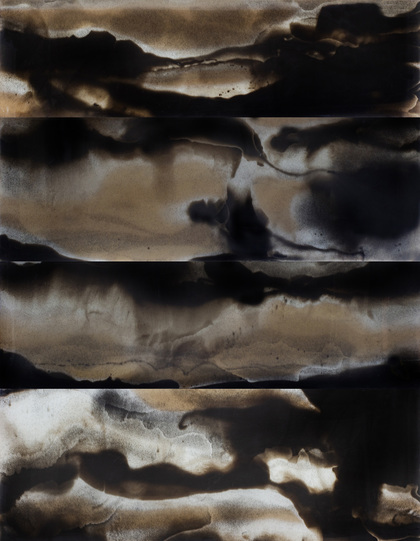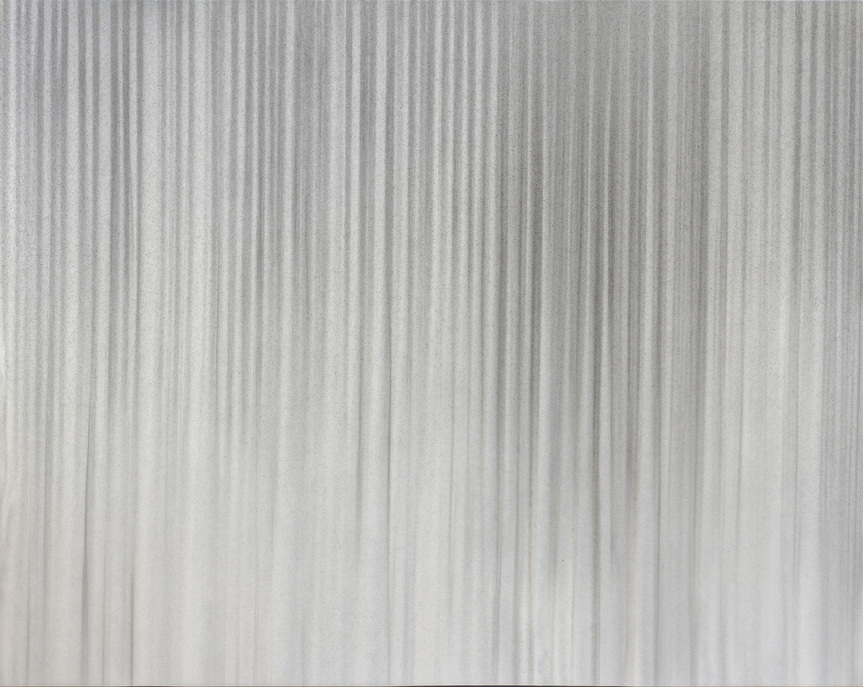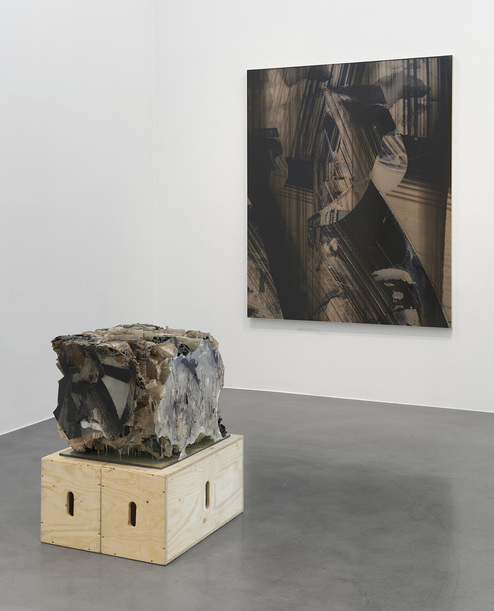-
From Current Issue
-
- Editor’s Letter Fire in the Heart
- Reviews I Gusti Ayu Kadek Murniasih
- Reviews 11th Seoul Mediacity Biennale: “One Escape at a Time”
- Dispatch Networked China
- One on One Monira Al Qadiri on Yukio Mishima
- Essays The rise of independent art spaces in pandemic-era Shanghai
- Features Tuan Andrew Nguyen
- Table of Contents
- Web Exclusives
- Archive
- Subscribe

R
E
V N
E
X
T
Installation view of ARIN DWIHARTANTO SUNARYO’s “Argo” at Simon Lee Gallery, London, 2019. All images courtesy the artist and Simon Lee Gallery, London / Hong Kong.
Arin Dwihartanto Sunaryo has always been an experimental painter. Having set aside the paintbrush in favor of his hands early on in his near-two-decade-long career, and later moving to more industrial methods using tools and resins, he rejected paint altogether in 2008. In 2012, he began to mix volcanic ash with resin, finding in this new medium a way of connecting his work to the landscapes, natural phenomena and indigenous materials of his native Indonesia. These innovative, resin-and-ash-based techniques were evidenced in “Argo” at Simon Lee gallery, Sunaryo’s first solo exhibition in the United Kingdom since 2010.
At a glance, the works in “Argo” are all relatively similar. The majority of them are abstract canvases with seemingly random, wavelike formations of color in a palette ranging from white through brown and off-black. Looking closer, however, variations become visible in process and approach, revealing the great attentiveness the artist lends his practice.
The four-paneled Mounga (all works 2019) was perhaps the best example of the imageries found in the show. Here, as elsewhere, ash of different tones has been poured in layers into quick-setting resin, culminating in a pleasing, marbled effect. There are some who have compared Sunaryo’s work to that of the abstract expressionists,
but distinctions between the two are as significant and worth attention as the similarities. Whereas Jackson Pollock and his contemporaries, for example, were hailed for acknowledging the flatness of the surfaces that they applied their paint to, portraying events rather than pictures, Mounga represents the action of applying ash and resin, but its depth is implicit in its process: there is, in fact, nothing on the surface of this piece. The entirety of the image is underneath.
While this is a rewarding theoretical starting point for thinking about the works in “Argo,” the many variations within the works provided an evolving multitude of ways to engage with Sunaryo’s painterly practice while exploring the exhibition. In Harel, for instance, the top layer of resin has a non-uniform texture, unlike the perfectly flat planes in the other pieces. The raised portions of the piece have the random form and appearance of a liquid splashed and immediately solidified on a surface, and as such are in fact closer to the action paintings one might expect from Pollock and the abstract expressionists. The crucial difference here, however, is that there is still much happening below the surface, set in stasis by many previous layers of resin.
In pieces elsewhere, the process of creation is foregrounded, and yet any trace of the artist’s hand is largely absent. In Ashfall #11, a row of dark grey lines are spread over a lighter plane. After closer examination, it becomes apparent that these lines are streams of ash that have been allowed to sink through the resin as it sets, leading to an overall visual effect that is as much a product of gravity as of any deliberate action by the artist. The creation of the piece was documented in a HD video work, Ashfall #5, projected in the gallery’s basement, in which the flecks of sinking ash are visible in extreme close up. Again, the impression is of an artwork being created in part by natural forces, lending credibility to the purported link between the artist’s practice and the natural environment from which it draws inspiration.
In some of the works on display, the resin and volcanic ash have been applied over a digital print. In the case of Slevin, this makes for a much more geometrically precise image, where crisp black lines intersect at various angles, but ultimately a less satisfying experience as there is less in the way of technique or process to engage with.
The real pleasure to be taken from this body of work is in considering it within the larger context and history of image-making. It is exciting to see flecks of ash and find a riff on pointillism, as in Kaliasa, or a mark of the New York school in a visible splash of resin in Harel. And when viewing in this state of mind, it is equally as exciting to find much that is new, unique to the artist and his own environment.
Ned Carter Miles is ArtAsiaPacific’s London desk editor.
Arin Dwihartanto Sunaryo’s “Argo” is on view at Simon Lee Gallery, London, until June 1, 2019.
To read more of ArtAsiaPacific’s articles, visit our Digital Library.




















